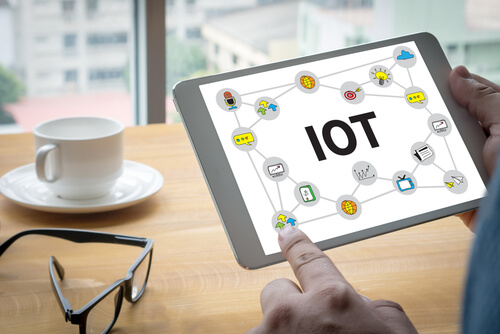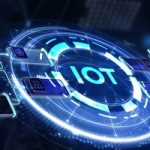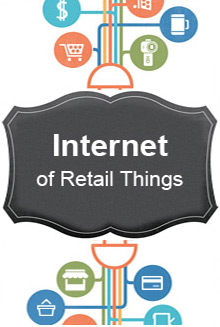The Internet of Things (IoT) has fundamentally changed the way we live, work and communicate in the last few years. It is safe to say that it has now crossed the chasm and has become a part of watercooler conversations in most businesses that are looking at technology as a key disruptor in creating competitive advantage.
Passing fad or the next big thing? Let’s look at the numbers
In the last couple of years, there have been predictions galore about everything from the massive potential of IoT to the size of the actual market itself. But the jury is now out and it’s safe to say that the Internet of Things is here to stay and the numbers tell the story –
- Bain predicts B2B #IoT will generate more than $300B annually by 2020, including about $85B in the industrial sector (Source)
- Internet Of Things Market To Reach $267B By 2020 according to Boston Consulting Group (Source)
- Discrete Manufacturing, Transportation and Logistics, and Utilities will lead all industries in IoT spending by 2020, averaging $40B each (Source)
- $6T will be spent on IoT solutions between 2015 and 2020 according to PwC (Source)
- Manufacturing dominates the growth of IoT network connections in the last year, growing 84% (Source)
IoT Solutions can drive both topline and bottom-line growth
While there is no doubt that IoT is growing, there is a distinction between its adoption in the consumer space vis-à-vis enterprises. IoT solutions in the consumer space are typically aligned to top line revenue growth and are centered around Personal Health, Connected Cars, Connected Homes and Wearables to name just a few. We have seen a lot of traction in this space and given its ability to capture people’s imagination by conspicuously impacting their day-to-day life, this growth is likely to continue.
However, it is investments in B2B or Enterprise IoT solutions that will fuel both top line and/or bottom line growth. It also covers a much wider spectrum including but not limited to Smart Cities, Industrial IoT, Utilities & Energy, Retail, Oil & Gas, Mining, Healthcare, Hospitality and Logistics.
So far, the ones who’ve made the largest headway with adopting IoT have been companies in the consumer products space, with the market being ripe for cool gadgets, hi-tech cars, fitness watches, or connected homes. At the same time, Enterprises with deep pockets and large appetites have been quite wary and cautious, despite having great upside.
How IoT can benefit Industrial Companies & Enterprises
While the potential of IoT has always been evident, the last few years have seen steady progress in its implementation across various creative use cases in both industrial companies as well as enterprises. Let’s look at the industrial sector first:
Employee Safety & Tracking – Wearables and other smart devices have made is much easier to track and ensure the safety of occupational workers in several areas like mining, construction, oil and gas, utilities, transportation, logistics, ports and manufacturing to name just a few.
Smart Production Systems – By connecting machines, warehousing systems and goods, IIoT can create smart production systems that basically control each other without requiring any manual intervention.
Reduced Asset Downtime – Implementation of IIoT and standards-based technologies can help simplify hardware, software, infrastructure, systems, and training, all essential when deploying low cost sensors into production assets thus pro-actively monitoring asset health and accurately predicting when services will be needed.
Supply Chain & Logistics – A supply chain management IoT solution provides location tracking, environment sensing and fleet management to ensure the smooth delivery of goods and logistics both for internal as well as external customers.
Moving onto Enterprises, there are various segments within which IoT can have a marked impact. One of these is the mammoth Retail industry that is experiencing new innovations and concepts such as smart shelves, smart energy and smart cold-chain monitoring.
At the same time, the hospitality industry is also readily embracing IoT in different ways including smart check-ins, smart suites and smart parking. However, this is just the tip of the iceberg and we are likely to see rapid wide-scale adoption across enterprises engaged in varied businesses.
Choosing the key components of an effective IoT Solution
There are many components that go into an IoT solution and the vast array of choices available for each can truly make or break its success. Let’s look at some of the more important components and the choices available with each –
Smart Devices and Gateways – Most often these can be off-the-shelf or custom built based on Business logic & overall costing.
IoT Platform & Cloud Compute – Possibly the widest choice is that of platforms with MS Azure IoT, AWS IoT, Google Cloud Platform, Predix, IBM Watson, PTC Thing Worx, HPE IoT, Mind Sphere up for contention. Almost every major player has an IoT platform and most of them are good.
Insights, Dashboards & Reporting – Most enterprise grade platforms provide reasonably good reporting at an IoT devices level. However, most large-scale enterprise implementations require custom built layers to make business logic and workflow sense.
Business Layers – It is best to custom build these by having business workflows in mind while also being cognizant of platform integration, edge computing decisions, forwarding logic and actions & insights.
Connectivity Options – Decisions related to connectivity at Edge & Gateway devices could probably be the most critical decisions which have huge cost implications and pit-falls, if they go wrong.
IoT Standards for Security & Safety
While there are plenty of IoT Platforms in the market, there aren’t too many tried and tested industry wide standards for all things IoT. In addition, the barrage of recently reported security vulnerabilities in the Industrial world have also lead to a greater than normal cautiousness leading to slower adoption.
While Industrial standards like OPC & OPC UA have been widely adopted in the Industrial community, it is important to bring IoT platforms & associated solutions under the OPC framework. This would lead to mitigating the security risks related to Industrial IoT implementations while easing fears with IoT adoption.
There is value in IoT but leap in with a trusted partner
As we have established, there is tremendous value in making discerning IoT investments based on your strategic objectives. However, it is very important to understand the fine print of an IoT solution that works for you including making informed decisions about connectivity, platforms, cloud, storage, analytics and how they integrate with the business layer. All of this has a significant impact on cost and returns on investment.
An experienced partner with deep expertise in IoT and a customer centric view is key to enabling a smooth adoption of IoT. We at Happiest Minds have a rich track record of working with a variety of clients across the globe in IoT enabling their products and helping them reimagine their customer experience.
If you’ve been thinking about how you can get started with your IoT journey, please reach out to us and we can develop a minimum viable product (MVP) or put together a proof of concept (POC) that will help you connect all the right dots and devices!

Chetan is a former Happiest Mind and this content was created and published during his tenure.








